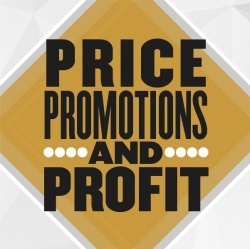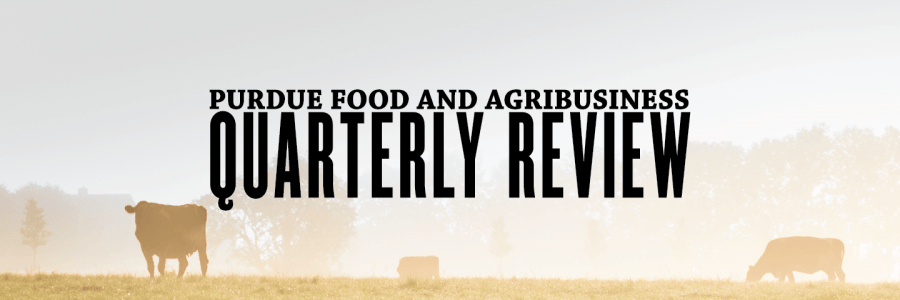Price promotions and profit
 Article
Article
Kuntner, Tobias; Thorsten Teichert (2016). “The scope of price promotion research: An informetric study.” Journal of Business Research, 69(8), 2687-2696.
Reviewer
Dr. Michael Gunderson, Director and Professor
Summary
The authors exhaustively searched an academic database of peer reviewed articles for those that consider the impact of price promotions. The authors use quantitative bibliometric analysis and text-mining techniques to quickly summarize and draw insights from five years’ worth of reading on the topic: 1,165 journal articles. The authors identify seven major streams of research: (1) dynamic promotional effects, (2) choice models*, (3) reference effects of price promotions, (4) couponing, (5) equilibrium pricing strategies, (6) retail promotions, and (7) repeat-purchase probability. For each of these main research streams the authors summarize one or two key findings.
What this means for food and agricultural businesses
The temptation to win over a new customer with a price discount is strong. Why not offer a steep discount one time–perhaps even at a negative margin–if it will result in a long-run relationship that generates returns? Many salespeople reason that it is the easiest way to overcome the most common objection in the short run. Many marketing officers see it as shortcut to a short-run boost in market share. Possibly, it is the lowest cost means for acquiring a new customer. The CFO might even be willing to go along with the hit in margins if it is offset with higher return in the long run.
The most important insight for agribusiness marketers comes from the third most important stream, the reference effects of price promotions. The authors conclude the key finding is “price promotions lower a brand’s reference price and negatively affect a brand’s profit.” That means prices are one means of signaling the value of products and services offered, and over time, price promotions will lower the customer’s perceived value of the products and services. I often tell groups that if you believe the best value you can bring your customer is a price discount, you are probably correct. That is, you are waving the white flag and do not want to dedicate the time to communicating the value of products and services to customers.
It seems obvious that price promotions will undoubtedly result in greater unit sales in the short run. One of the key findings in the dynamic promotional effects stream, however, is that sales increases do not persist in the long run. An important short-term question is does the increase in unit sales more than offset the revenue forgone on each unit sold as a result of the promotion? Of even greater importance is the impact of price promotion on contribution margin and profitability.
The paper identified many streams in price promotion research that informed the impact on brand loyalty. Unfortunately, all of them tend to point toward negative long-term consequences of price discounts. Promotional pricing increases customers’ long-run price sensitivity. Price promotions negatively affect a brand’s profit. Price promotions are less profitable for brands with loyal customers. The impact of price promotions has evolved over the span of the search period. Older research suggested that when price promotions were over, the repurchase probability went down. More recent research suggests there is no adverse effect on the repurchase probability.
Given that nearly all of these streams found long-run adverse consequences, the effectiveness and impact on profits of price promotions must be carefully scrutinized. Clearly it is more complicated in a business-to-business relationship than it is in a consumer setting (I had hoped the authors’ search would surface business-to-business discounting as one of the important streams). Without insights on how discounting can influence individual account relationships, it is difficult to draw strong conclusions. Agribusiness marketers might want to consider calculating a customer lifetime value for particular relationships or segments of customers. Then CLV could be tested for its sensitivity to the long-run effects of price promotions.
* This particular stream is focused on the methods of assessing price promotion research rather than the actual impacts of price promotion research. Thus, it is omitted entirely from this review. Those readers who are market researchers might find it of interest to know that choice models are found to be an accurate instrument.
RELATED POSTS:
A great moment for value-based sales in agribusiness
Value-based sales can empower companies to craft compelling value propositions, understand the customer’s business model and effectively communicate to stakeholders.
How can big data empower the development of new products?
Data is one of the most powerful resources for a company. It enables accurate decision-making and minimizes risk, ensuring greater revenue and sustainable growth.
Unlocking Growth: Exploring innovation dynamics in the agrifood sector
The future for the agrifood sector appears promising, driven by technological advances, strategic M&A activity and a growing commitment to innovation.

